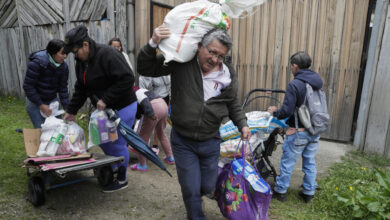One In 10 People Suffer From Hunger In The World
One of the biggest goals that states have set for 2030 is to end hunger, food insecurity and malnutrition in all its forms. However, a recent report warns that humanity is moving away from that goal .

Photo: Freepik
LatinAmerican Post | María Fernanda Ramírez Ramos
Listen to this article
Leer en español: 1 de cada 10 personas padece hambre en el mundo
According to a report entitled " The State of Food Security and Nutrition in the World ", during 2021, 828 million people suffered from hunger, a figure close to 9.8% of the population. This represents an increase of 46 million compared to 2020 and 150 million to the figures prior to the coronavirus pandemic. In other words, today about 10 out of 100 people suffer from hunger in the world.
This report was prepared by the Food and Agriculture Organization of the United Nations (FAO), the World Health Organization (WHO), the United Nations Children's Fund (UNICEF), the International Fund for Agricultural Development (IFAD) and the World Food Program (WFP). In other words, it has an approach from different areas, including the analysis of food systems, food quality and the groups that are most vulnerable to hunger. In this regard, it was found that the gender gap in food insecurity has increased, making women more exposed to food shortages and nutritional deficiencies. In 2021, "31.9% of the world's women were moderately or severely food insecure, compared to 27.6% of men."
On the other hand, the report points out that during 2020, around 3.1 billion people were unable to have a healthy diet , 112 million more than in 2019. One of the reasons was food inflation caused by the pandemic. In this regard, 45 million children under 5 years of age suffered from extreme malnutrition. Likewise, " 149 million children under the age of five suffered from stunted growth and development due to a chronic lack of essential nutrients in their diet, while 39 million were overweight."
How is hunger in Latin America?
The report points out that there is a strong inequality in the presence of hunger in the regions. The region with the greatest presence of hunger is Africa, where 20.2% of its population suffers from it; Asia follows with 9.1%, Latin America and the Caribbean with 8.6%, 5.8% in Oceania and less than 2.5% in Europe and North America.
Although Latin America is not the region with the greatest food insecurity and hunger, the figures indicate a paradoxical situation, since it is one of the regions with the greatest biodiversity and fertile land, which, in fact, has the potential to be key for world food security.
Despite the fact that the report evaluates the situation in 2021, various organizations have already warned that the war in Ukraine will put many countries in a situation of vulnerability and food insecurity, since they depend on the fertilizers and grains produced there. This situation, together with the data on the growth of hunger, is an emergency call for governments to plan and prioritize food security strategies within their countries, as well as reducing inequality so that people have access to a basic food basket with nutritious and healthy products.
We suggest you read: World Hunger: The Silent Threat Behind The War In Ukraine
At the same time, it allows us to reflect on the need to create plans that allow for the industrial development in Latin America of fertilizers and other essential products for the agricultural sector, since the region has the capacity to produce them, as well as the rapid implementation of the new technologies to improve crop efficiency and productivity.
However, all this must be done with a perspective of sustainability and with a focus on social and territorial development, because if in order to provide the world with meat or soy food, the forests must be deforested and the soils damaged, it would not be planning consistent with the protection of the environment and the fight against climate change. Agriculture, livestock and sustainable fishing are then key in the process, beyond the increase in net production figures.





